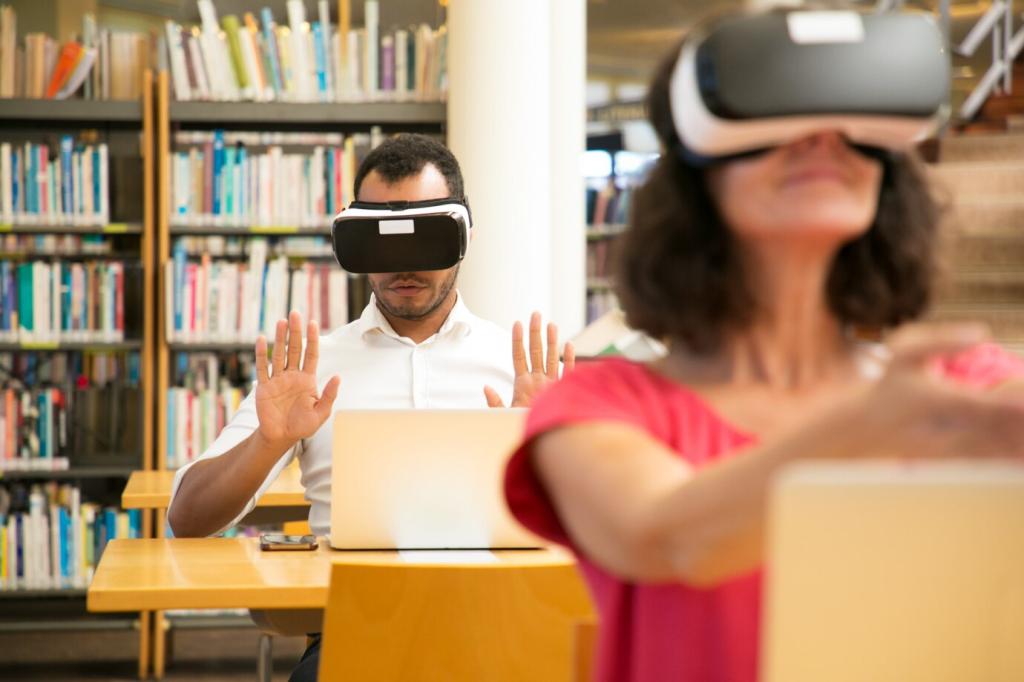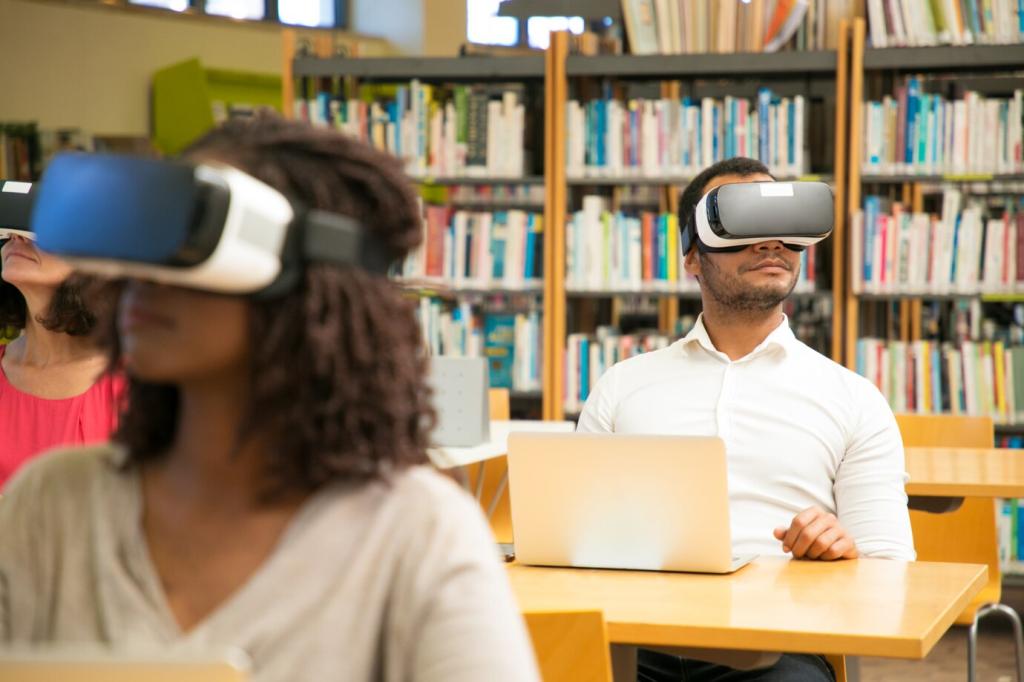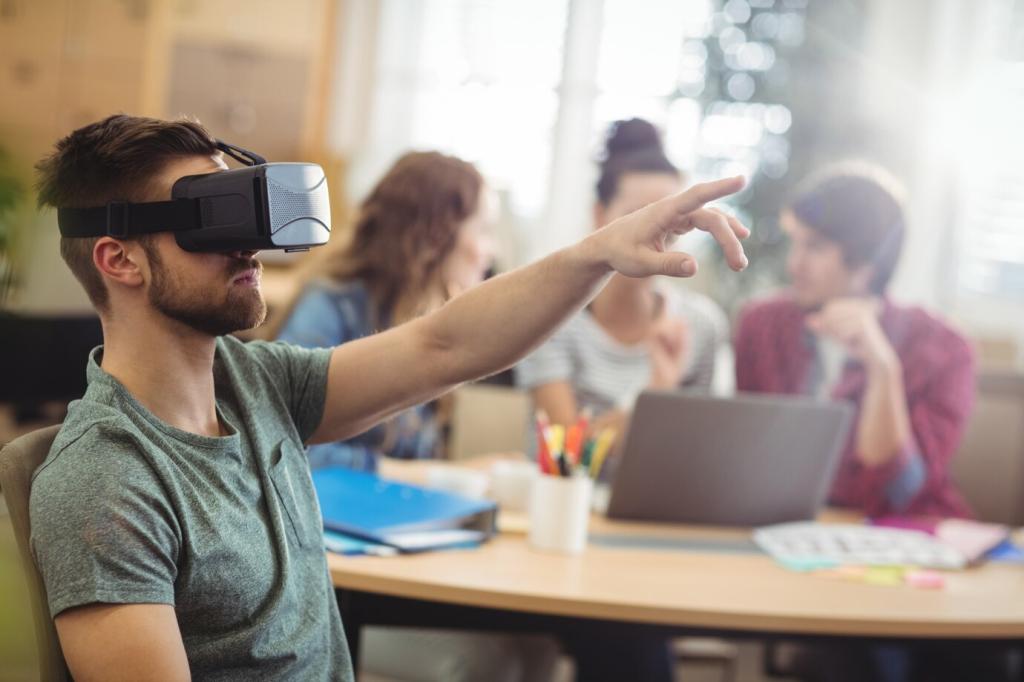
Virtual Reality in Classroom: Transforming the Learning Experience
Virtual reality (VR) is redefining educational spaces, creating immersive and interactive environments for students and teachers alike. VR technology, once the domain of video games and entertainment, is now a powerful classroom tool. By transporting learners to new worlds and offering hands-on experiences without physical limitations, VR enriches lessons and enhances student engagement. As classrooms increasingly adopt digital solutions, VR stands out as a revolutionary approach to education, offering not just novelty, but meaningful and lasting learning opportunities. Embracing immersive technology can deepen understanding, cater to different learning styles, and spark curiosity, truly transforming the learning experience for all.
Immersive Learning Environments
Engaging the Senses
VR leverages sight, sound, and sometimes even touch to fully engage students in their learning journey. By offering multisensory input, students go beyond passive observation—they interact directly with content. This sense of presence not only increases focus but also helps to break down the barrier between theoretical knowledge and practical understanding. As a result, learners are more likely to develop a personal connection to the material and retain information for the long term.

Turning Learning into Adventure
Traditional lessons can become routine, but VR turns every subject into an adventure, inviting students to explore, investigate, and solve problems. Activities that may have felt tedious in a textbook become interactive journeys, such as solving math challenges on a virtual treasure hunt or exploring ecosystems firsthand. This sense of adventure encourages active participation and helps students discover a genuine enthusiasm for learning.
Empowering Active Participation
Unlike passive listening, VR puts students at the center of the action. They become explorers, scientists, or historical figures, directly interacting with the environment. This active participation fosters autonomy, initiative, and critical thinking, as students must make decisions, test hypotheses, and collaborate with peers in virtual settings. Such experiences build confidence and skills crucial to lifelong learning.
Bridging Attention Gaps
Distractions abound in modern classrooms, but VR’s immersive nature can help bridge attention gaps. By enveloping students in a focused virtual space with limited external stimuli, it’s easier for learners to stay engaged. Teachers also gain new insights through student interactions in VR, allowing them to identify engagement challenges and provide timely, targeted support.
Previous slide
Next slide
Previous
Next
Supporting Diverse Learning Styles
For visual learners, VR is a dream come true. Abstract concepts in science, math, or literature are transformed into vivid, dynamic experiences. Complex structures such as molecules, mathematical graphs, or narrative settings are rendered in three dimensions, making them far easier to grasp. This visualization bridges gaps in understanding, particularly for concepts that are challenging to imagine from traditional resources.
Making Education Accessible
Overcoming Physical Barriers
For students with physical disabilities or mobility challenges, VR provides alternative ways to participate in activities and field trips that might be otherwise impossible. They can explore virtual museums, conduct laboratory experiments, or visit historical landmarks—all from their classroom or home. This inclusivity empowers all learners to access the same experiences as their peers.
Reaching Remote and Rural Communities
VR can extend the walls of the classroom to include students in remote or under-resourced areas. High-quality lessons, expert instruction, and interactive experiences become accessible regardless of a student’s location. This technology bridges significant gaps in educational resources, ensuring more students have the opportunity to pursue their interests and talents.
Opening Doors to Expensive Experiences
Many learning experiences, such as traveling to foreign countries or accessing specialized laboratories, are out of reach for most students due to costs. VR democratizes access by providing virtual alternatives that are rich, interactive, and cost-effective. This equitable access to educational enrichment activities brings new possibilities for discovery, regardless of socioeconomic status.
Reinventing Assessment and Feedback
With VR, assessment moves beyond written tests to real-world tasks. Students demonstrate their skills and understanding by solving problems, conducting experiments, or leading virtual expeditions. Teachers can observe their approach, reasoning, and collaboration firsthand. This authenticity ensures assessment reflects true mastery and not just rote memorization.
VR systems often provide real-time feedback as students complete tasks, identify errors, or attempt solutions. Interactive cues, hints, and corrections guide learners toward mastery in the moment, making assessment a dynamic part of the learning process. Teachers can also use analytics from VR platforms to tailor further instruction and support.
Assessment in VR isn’t only about right or wrong answers—it’s about reflecting on the learning process itself. Students can review replays of their performance, evaluate decisions, and set goals for improvement. This reflection builds metacognitive skills and encourages a growth mindset, empowering learners to take greater ownership of their educational journey.

Addressing Implementation Challenges
Overcoming Technical Limitations
Implementing VR requires reliable infrastructure, compatible devices, and ongoing technical support. Schools must invest in hardware, software, and training for educators to seamlessly operate the tools. Troubleshooting and maintaining equipment is an ongoing process, and solutions must be developed to ensure smooth day-to-day operation in diverse educational settings.
Managing Costs and Equity
The cost of VR can be prohibitive for many schools, especially when considering hardware, software licenses, and continuous updates. Ensuring equitable access means seeking creative funding solutions, exploring partnerships, or leveraging scalable platforms. Decision-makers need to weigh long-term value against upfront investments to ensure resources are distributed fairly.
Ensuring Meaningful Integration
Introducing VR should not be a technology-for-technology’s-sake approach. Educators must carefully align VR experiences with curriculum goals, learning objectives, and assessment strategies. Meaningful integration requires thoughtful lesson planning, ongoing teacher development, and an openness to iterate as best practices evolve. This intentional approach maximizes the transformative impact of VR.
